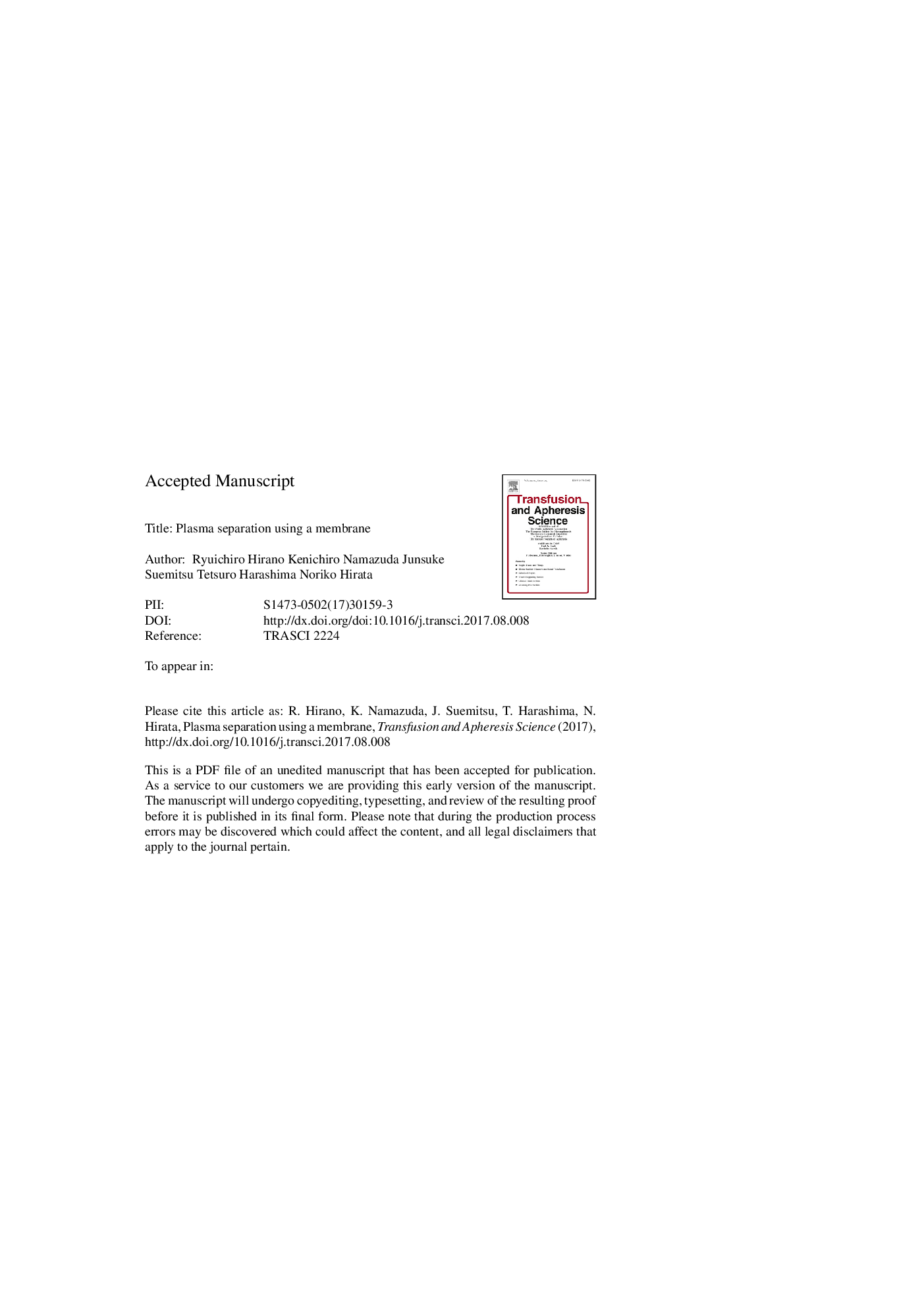| Article ID | Journal | Published Year | Pages | File Type |
|---|---|---|---|---|
| 8735129 | Transfusion and Apheresis Science | 2017 | 31 Pages |
Abstract
Plasma separation using a membrane is clinically used as plasmapheresis therapy, such as plasma exchange (PE), double-filtration plasmapheresis (DFPP), or plasma adsorption (PA) modalities. Plasma separation is performed either by centrifugation or by filtration, which involves a permeable hollow fiber membrane. A plasma separator with a hollow fiber membrane was first developed in Japan in the 1980s. It has been used for more than 30 years with continuous technical modifications. Treatment with a membrane-type plasma separator is a safe and well-established modality for many drug-resistant and/or refractory diseases. Currently, national health insurance covers plasmapheresis for â¼30 diseases in Japan. Membrane-type plasma separators are used not only in Japan but also in many other countries. Plasmapheresis treatments with a membrane-type plasma separator are an important alternative for patients with drug-resistant and/or refractory diseases at present and in the near future.
Keywords
Related Topics
Health Sciences
Medicine and Dentistry
Hematology
Authors
Ryuichiro Hirano, Kenichiro Namazuda, Junsuke Suemitsu, Tetsuro Harashima, Noriko Hirata,
